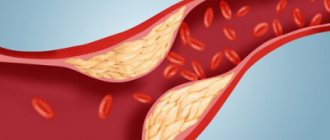From time to time
Statistics say that half of the inhabitants of our country engage in one kind of sport or another, but with what regularity is a big question. More often, alas, this happens from time to time - when you want to lose weight, for example, for some event.
With such rare but intense loads, fatty acids accumulate and liver cells are damaged; a significant amount of breakdown products can accumulate in the human body, the liver is responsible for removing them. As a result, you are more likely to develop non-alcoholic fatty liver disease.
Mechanism of pain
First, a little information for those who have not had time to read other articles on our website: the liver itself cannot hurt, since it practically does not contain nerve endings. As a rule, pain in the right side occurs in two cases:
- due to an increase in the size of the liver, which provokes stretching of its fibrous capsule. It is this that gives the feeling of nagging pain, since it contains nerve endings;
- as a result of spasm or blockage of a certain section of the biliary tract by calculi (stones). In this case, the pain will be of a pinpoint tingling nature.
As for running itself, the situation is as follows: part of the total blood volume in our body does not circulate, simply remaining in reserve just in case. There are different cases: sudden bleeding, which creates the need to use additional reserves for normal blood supply to vital organs, or, for example, the need to improve blood supply to muscles under increased stress.
This is exactly what happens in the case of our beginning runners: in order to strengthen the work of the muscles when running, the body, receiving a corresponding impulse from the muscles of the legs and diaphragm that have become involved in the work, begins a hasty redistribution of emergency blood reserves.
However, for this redistribution to occur evenly, it takes some time. Therefore, with a sharp increase in load, blood does not have time to flow quickly enough from the abdominal cavity to the muscles, filling the liver and spleen, which causes an increase in these organs in size .
And an enlarged liver, as we already know, stretches its own fibrous capsule and creates pain.
Lose weight urgently
Another common situation is when we start exercising and at the same time follow a strict low-calorie diet so that the effect is faster and more obvious. The liver tolerates this combination very poorly. As a result of the diet, the body does not receive enough beneficial fatty acids and essential vitamins - antioxidants, which are necessary for the restoration of liver, brain and heart cells.
Article on the topic
Menu for liver restoration: 5 healthy products As a result, the liver’s function is disrupted; without these substances, it simply does not have the strength to cope with heavy physical activity.
How to avoid pain?
Following just a few simple principles will help you avoid pain while running:
- Start running only after a thorough warm-up. This will help avoid stagnation of blood in the liver, as well as normalize blood supply to the muscles of the legs and diaphragm. Before you start jogging, do a few squats at a slow pace, then bend your torso forward and to the sides a few times. After this, proceed to measured walking, gradually increasing your step speed. After walking at a fast pace for about 100-200 meters, start running;
- watch your breathing: you need to breathe evenly and measuredly, using the muscles of the diaphragm. Frequent shallow breathing, in addition to discomfort, will cause rapid fatigue;
- If you feel severe discomfort in the right hypochondrium while running, go to a fast step. After walking 200-300 meters, return to easy running. Don’t set super-goals – go towards the goal slowly but confidently. Gradually increase the load - this will help your body adapt to the correct redistribution of blood.
Signal for help
The liver is a unique organ. It will work even if only 20% of healthy cells remain in it, and is capable of self-healing.
There are practically no nerve endings in it, and therefore it does not hurt, and the initial stages of the disease can occur with virtually no symptoms.
To protect and restore the liver, there are hepatoprotectors. They improve the protective and transport function of the liver and help its cells resist oxidative stress. Namely, it is the most important mechanism in the development of alcoholic and other liver diseases.
As a result, liver cells are able to neutralize toxins, get rid of fat, and cope with inflammation faster.
Cause of pain
The simplest causes of pain may lie in:
- poor warm-up;
- shallow shallow breathing;
- diseases of the liver, gall bladder, which manifest themselves during exercise;
- osteochondrosis.
But the true causes of pain in healthy athletes are still unknown.
Previously, there was a theory that the blood flow in the liver may be disrupted, the blood stagnates, the liver stretches its own capsule and pain occurs on the right side. Or, if the pain is on the left, it was associated with a stretch of the spleen. The possibility of impaired blood supply to areas of the diaphragm and the appearance of ischemic pain was also considered. Another proposed mechanism is stretching of the subdiaphragmatic ligaments during running and other loads associated with shaking.
The theory that pain in the side is associated with problems in the liver turned out to be unfounded.
Recent studies have shown the inconsistency of all these theories. The study revealed that such pain occurs not only in runners, but also in swimmers (no shaking), horse riders (although they are sitting and there is no lack of oxygen for the tissues). One of the assumptions today is excessive irritation of the nerve endings located in the peritoneum. This occurs when there is strong friction of the tissues in the abdomen during intense training.
There is also a connection between the intake of hypertonic drinks and the frequency of pain. Athletes consuming isotonic or hypotonic fluids had a lower incidence of symptoms.
In addition, a connection was found with dysfunction of the facet joints of the spine and excessive lumbar deflection. A possible mechanism of pain is associated with compression or irritation of the nerve roots innervating the corresponding areas of the abdomen.
The cause of the pain and ways to combat it remain to be determined. If the pain is severe and increases, you should also see a doctor to rule out other problems. Only after this can we assume that such pain is related to the load.
Weights to help the heart
Weight training is good for the heart, scientists from the USA have found. Iron training has long been considered useless for the cardiovascular system, unlike aerobics. But it turned out that those who “pump up muscles” at least three times a week have the same correct ratio of “good” and “bad” cholesterol as runners.
Article on the topic
Fitness mistakes: what exercises can be harmful Compared to people who lead a sedentary lifestyle, those who like to “pump iron” have a significantly reduced risk of a number of cardiovascular diseases, in particular atherosclerosis. They are also less likely to have excess body fat, including the most dangerous internal fat, which is located inside the abdominal cavity and around the heart.
What to do to prevent side pain when running
In order to avoid pain while running, you should remember the following important rules:
- A warm-up is a must before jogging. Its goal is to warm up the body, improve blood flow and prepare the circulatory system for a sharp release of blood. Sports loads should only be gradual.
- You should breathe evenly at the pace that is most comfortable. For pain caused by diaphragm spasm, you need to take as deep a breath as possible and exhale through pursed lips. If necessary, the exercise is repeated several times.
- If exercising on an empty stomach is not possible, then you can run no earlier than 30-40 minutes after a heavy meal . You should avoid eating fatty, spicy, smoked and fried foods. It is preferable to limit yourself to salad, porridge or any fermented milk product.
- Before you start running, you should consult your doctor . This is especially true for those who have chronic diseases.
To reduce pain, you should relax the muscles of your shoulders and arms and change the rhythm of your breathing, inhaling through your nose and exhaling through your mouth.
Using three fingers, you need to press several times on the most painful place for seven seconds. And under no circumstances should you stop or sit down. It's better to slow down or take a step. When preparing for running, you should adjust your diet and sleep patterns, work and rest. Smoking and alcohol are incompatible with a healthy lifestyle. You should not start jogging when you are tired, stressed or sleepy. Morning running should begin no earlier than 40 minutes after waking up.
Walking Against Cancer
Physical exercise reduces the risk of developing postmenopausal breast cancer. Based on the results of a large study, the American Cancer Society found that moderate exercise is necessary for women over 50 for more than just weight loss. It turns out that those whose activity was less than 7 hours of walking or other aerobic activity per week had an increased risk of this disease.
7 hours of walking per week reduced the risk to 14% below average. In the most active women who walked 10 hours a week or more, the risk of a dangerous disease was reduced by 25%.
Nutritional Features
You can warm up before a run for at least hours, you can learn to properly regulate your breathing, but these measures will not help you avoid painful sensations in your right side if you overeat on sweets or fried potatoes immediately before a run. Strictly speaking, it is generally not recommended to eat heavily before a run - this creates additional stress on the liver, since it takes an active part in digestion. And if you load it with a large volume of fatty foods (after all, the main digestive function of the liver is the secretion of bile, which breaks down lipids), stress will double.
That is why at least an hour and a half should pass after eating - provided that you have not eaten very heavily. If the meal was full (first, second and compote), it makes sense to wait at least 2 hours. If these rules are not followed, the matter may not be limited to discomfort in the right side: in such cases, novice athletes often begin to vomit.
People with chronic diseases of the liver and gastrointestinal tract should pay special attention to all of these precautions.
Persons who have recently suffered from viral hepatitis must consult their doctor before starting classes.
The effect of running on the liver
During running, partial cell renewal occurs in the liver tissues, oxygen consumption is 2-3 times higher than normal. By inhaling and exhaling air, the diaphragm compresses and releases (respectively) the walls of the liver, thereby improving the outflow of bile, and tissue restoration occurs.
Jogging helps lower blood cholesterol. With daily jogging for 1 - 1.5 months for 30 - 60 minutes, strong passive shocks are formed in the gallbladder and ducts, they contribute to the removal of stone formations.
Liver stimulation
The leader in stimulating liver function is proper nutrition:
- Adequate protein intake.
- Baked apples, vegetables - fiber.
- Consuming foods fortified with vitamin C every day.
- The menu is rich in vegetable and animal fats, the source is dairy products.
- Complete abstinence from alcohol
- Liquid two to two and a half liters per day.
Protection from the negative effects of alcohol
American doctors and scientists have found that jogging protects the liver from the development of inflammatory processes that arise from regular alcohol consumption.
Drinking causes serious health problems: the development of fatty liver disease, cirrhosis and cancer. Authors Fr. Regular physical activity protects against metabolic dysfunction that leads to irreversible liver damage.
Let's make a small conclusion: aerobic exercise serves as a prevention of liver damage for people who cannot give up alcohol completely. Measured physical activity helps maintain good health for a long time, reducing the risk of serious dangerous diseases.
What to do to prevent runners from having liver problems
- Maintain a gap between meals and physical activity (2 hours)
- Start with warm-up exercises.
- Run with pleasure, at a pleasant pace.
- Maintain the rhythm of breathing.
- Distribute the load evenly.
Sport requires a rational approach. You need to exercise, taking into account the characteristics of your body, and carefully select the appropriate system.
Unfortunately, there are not many practically healthy people in society; it is necessary to focus on all existing diseases and potential risks. Follow your doctor's advice. Moderate exercise is always beneficial.











